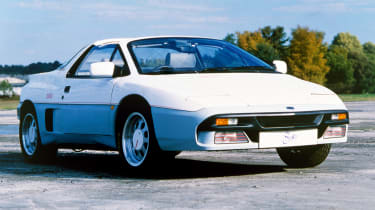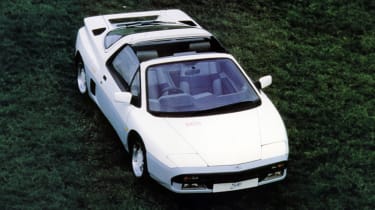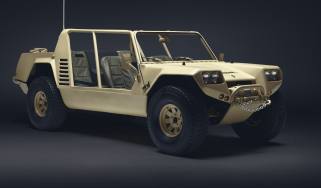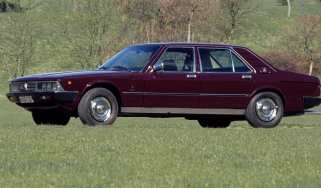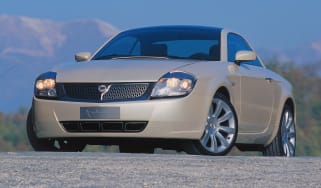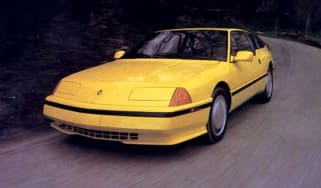Panther Solo 1 – dead on arrival
This lightweight, mid-engined Brit came achingly close to being an affordable ’80s hero
Of all the companies likely to make a mid-’80s car mag cover star, you wouldn’t have bet on Panther. Founded in 1972 by fashion designer and some-time saloon car racer Bob Jankel, Panther spent the ’70s making a twee Jaguar SS100 replica, a faux 1930s saloon with Austin 1800 doors, a restyled Triumph Dolomite and, latterly, another fake pre-war roadster called the Lima. Most notoriously, in 1977 it created the Panther 6, a monstrous six-wheeled convertible powered by an 8.2-litre twin-turbo Cadillac V8, just two of which were made.
This zany freak show carried on until the end of 1979 when Panther ran out of money. Fortunately, soon afterwards South Korean industrialist Young C Kim visited London for a classic car auction, spotted a Lima outside his hotel and attempted to order one only to find production had halted. So he decided to buy the company.
Under new ownership Panther came up with an improved version of the Lima called the Kallista, but Kim didn’t want the company to make fake ’30s roadsters forever and that’s where project EM‑25 came in. Inaugurated in April 1983, EM‑25 was to be a thoroughly modern mid-engined sports car with an avowed aim to be light, compact, affordable, and easy to live with. To prove he wasn’t mucking about, Kim hired Len Bailey, one of the brains behind the Ford GT40, to draw up the car’s structure, and approached the great Italian design houses to style its aluminium skin. When their fees turned out to be off-puttingly enormous he contacted Ken Greenley, leader of the vehicle design course at the Royal College of Art, hoping to find some enthusiastic students to do his styling work on the cheap, only for Greenley himself to volunteer for the job.
In October 1984 EM‑25 made its debut at the British motor show in Birmingham, now christened the Panther Solo. The UK car media whipped itself into an ecstatic frenzy at this promising newcomer, and with good reason: the targa-topped body looked great and the whole thing brimmed with on-paper promise. It had a chassis by an actual racing car engineer, it had a target price of under £10,000, and it was claimed to weigh less than 850kg, which would allow it to make the most of its 105bhp Escort XR3i engine. Better yet, Panther hinted stronger engines could follow, such as the 130-horsepower unit from the Escort RS Turbo.
After the motor show, Brit car journos were allowed time in the Solo development mule and the gushing prose continued, though the car was not without problems. Engine cooling was something that needed to be addressed, as were the weirdly narrow footwells brought on by the car’s radically cab-forward proportions. But the Solo’s biggest problem wasn’t the design, it was another car.
In 1985 Young C Kim was on the Pacific island of Guam when the local Toyota dealer offered him a drive in an early MR2, fresh off the boat from Japan. Here was another lightweight, affordable, 1.6-litre mid-engined sports car, already on the market and backed by the might of the Toyota corporation. Kim knew he couldn’t compete. ‘I drove the car,’ he later explained, ‘and straight after I rang up and told them to stop Project Solo.’
In fact, the project didn’t stop so much as pause, regroup and head in a different direction. Greenley and his team took a chainsaw to the original Solo buck, lengthening and widening the whole thing so it could become a junior supercar. Bigger car, bigger performance, bigger price, bigger profits. Or so the theory went. But the Solo 2 that eventually went on sale in 1990 running Sierra Cosworth power and four-wheel drive in an advanced composite shell was a disaster and just a handful were sold before Panther killed it. Maybe the prettier, lighter, simpler Solo 1 was a better idea after all.
This story was first featured in evo issue 307.
